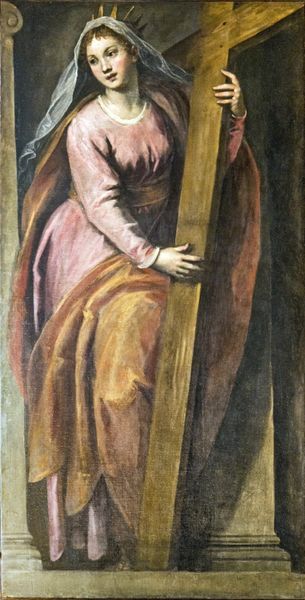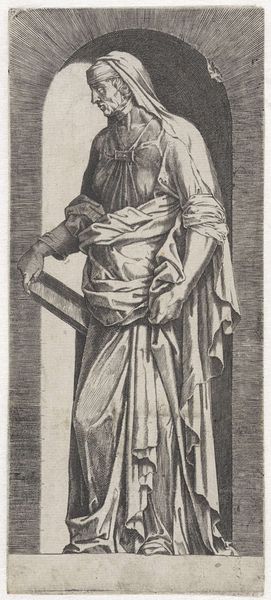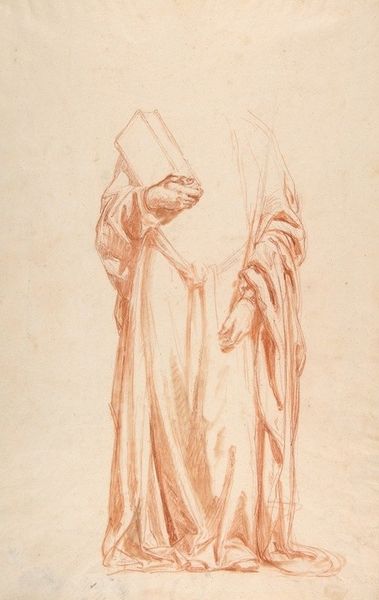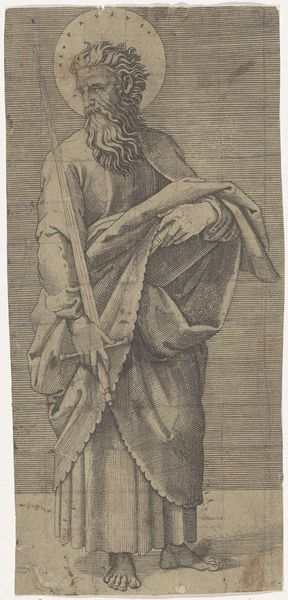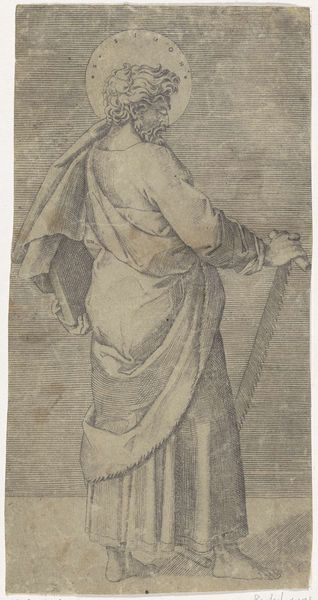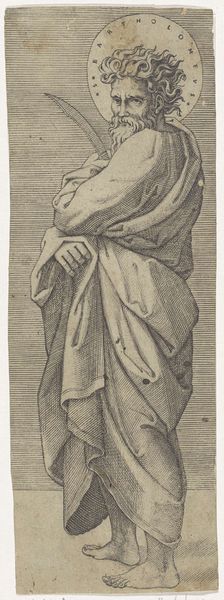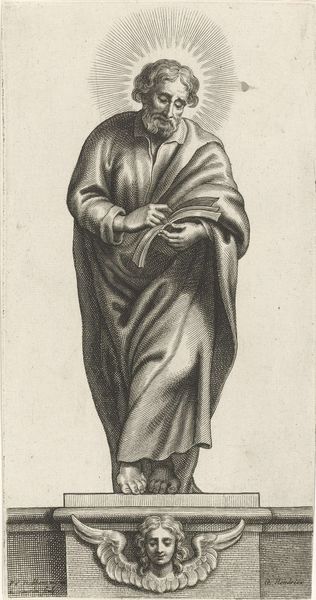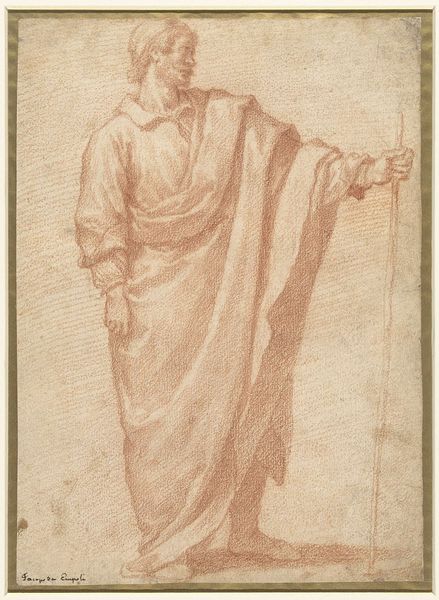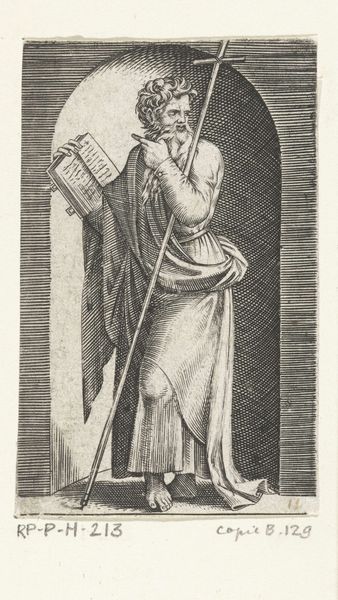
drawing, textile, charcoal
#
drawing
#
textile
#
charcoal drawing
#
figuration
#
form
#
11_renaissance
#
charcoal
#
italian-renaissance
Dimensions: 29 x 13.1 cm
Copyright: Public domain
Curator: At first glance, I find myself drawn into the way the light and shadow describe such detailed folds and texture. Editor: Indeed. What we see here is Domenico Ghirlandaio's "Study of Garments," dating back to 1491. Currently housed in the Uffizi Gallery in Florence, this drawing, primarily rendered in charcoal, provides fascinating insight into Renaissance artistic practice. Curator: Fascinating indeed! It looks like more than a mere study. It almost feels like the draped fabric has an identity all its own. Note how the covering, especially over what might be a face, lends a mysterious air, doesn't it? What could it mean? What cultural values can be unpacked when it comes to representations of humility, devotion, or perhaps even concealment during the Renaissance? Editor: Formally speaking, observe how the artist’s adept use of hatching and cross-hatching builds volume and mass. The darker charcoal accents give a palpable sense of depth and three-dimensionality to an otherwise flat surface, a magnificent rendering of tactile presence using minimal means. Curator: True, the technique amplifies that quality, bringing up questions about religious dressing within this timeframe and how clothing served not only practical, but symbolic, functions. Was this a study for a religious scene or an expression of social standing perhaps? Editor: One might even explore how this preoccupation with drapery links back to classical sculpture. It isn’t merely about observation, it’s about a system of representation. Curator: Right, tracing connections to Roman togas as markers of status and virtue! Garments in those contexts are very communicative—encoded messages ready to be deciphered. And consider what it might evoke: memory, faith, ritual... all channeled through this single charcoal sketch. Editor: In its monochromatic nature and delicate execution, it presents an interesting intersection of utility and high art, blurring the boundaries between pure craft and expressive form. What was initially for study has transformed into a complex aesthetic encounter through form. Curator: Well said. This look beneath the visible offers much, revealing our human impulses towards not just the functional, but towards imbuing objects with symbolic resonance, allowing this garment study to echo deeper societal and spiritual landscapes. Editor: Yes, looking so closely has shifted it from a sketch to a statement, highlighting how close visual interrogation can truly enhance one's understanding and engagement with art.
Comments
No comments
Be the first to comment and join the conversation on the ultimate creative platform.
